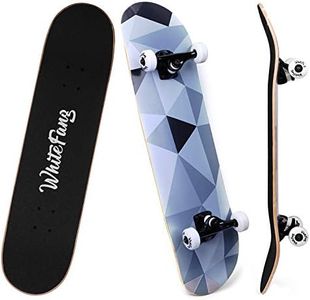We Use CookiesWe use cookies to enhance the security, performance,
functionality and for analytical and promotional activities. By continuing to browse this site you
are agreeing to our privacy policy
10 Best Skateboards
From leading brands and best sellers available on the web.Buying Guide for the Best Skateboards
Choosing the right skateboard involves thinking about your experience level, where you'll be riding, and what style of skating you're most drawn to. Skateboards come in a variety of sizes, shapes, and builds, each suited to different uses like cruising, tricks, or transportation. Before buying, consider how you'll use your skateboard most often and how comfortable you feel controlling the board. Trying out a few types or standing on them in-store can help you get a sense for what feels right.Deck WidthDeck width is how wide the skateboard is from side to side. This is important because it affects your stability and control. Narrower decks (usually 7.5 to 8 inches) are lighter and easier to flip, making them great for technical tricks and street skating, but they can feel less stable, especially for beginners. Wider decks (over 8 inches) provide more surface area for your feet, which can help with stability when riding ramps, cruising, or if you have larger feet. To find what works for you, think about your size and what kind of skating you want to do most—street, tricks, ramps, or cruising.
Deck LengthDeck length measures how long the skateboard is from nose to tail. This affects how the board feels under your feet and how easily you can turn. Shorter boards (around 28-32 inches) are typically more responsive and suited for tricks and quick turns, while longer boards offer more stability and are better for cruising. When choosing, consider your height and your preferred skateboarding style—taller skaters or those wanting more comfort when riding longer distances might prefer a longer deck.
Wheel Hardness (Durometer)Wheel hardness, or durometer, indicates how hard or soft the skateboard wheels are. Hard wheels (above 99A) are great for smooth surfaces and doing tricks because they slide more easily, but they can feel uncomfortable on rough pavement. Softer wheels (below 95A) absorb more impact and give a smoother ride, which is better for cruising or skating rough streets. Think about where you'll ride most—choose harder wheels for skateparks and tricks, or softer wheels for getting around town or rougher surfaces.
Wheel Size (Diameter)The diameter of skateboard wheels is measured in millimeters and influences speed and how easily you can maneuver. Smaller wheels (50-54mm) are lighter and help with tricks, while larger wheels (55mm and above) roll faster and handle cracks and bumps better, making them ideal for cruising or downhill riding. If you're into technical tricks, go smaller; if you want speed, comfort, or plan to ride longer distances, opt for larger wheels.
Truck Width and HeightTrucks are the metal parts that attach the wheels to the board, and their width and height affect how the board turns and how stable it feels. Trucks should generally match the width of your deck for balanced performance. Lower trucks sit closer to the ground and are better for tricks with smaller wheels, while higher trucks allow for bigger wheels and are best for rougher terrain or faster riding. Choose your trucks based on your wheel size and preferred skating style, always aiming for a match between deck and truck width for best results.
ConcaveConcave refers to the curve across the width of the skateboard deck. It influences how well your feet grip the board and can help with control during tricks. Steeper concave gives you more grip for aggressive tricks and flips, while a mellower concave feels more comfortable and is easier to balance on, ideal for beginners or cruising. Consider how confident you are on a board and what type of skating feels right—a pronounced concave helps with performance, while a gentle one aids comfort.
Material and ConstructionMost skateboard decks are made from layers of maple wood, but some may use alternative materials like bamboo or composites for different flex and durability. Maple is traditional, offering a reliable balance of strength and flexibility for most styles, while bamboo can be lighter and more flexible, suitable for cruising. If you're starting out or planning to focus on tricks, classic maple is a dependable choice. For something different or for cruising, you might explore other materials.
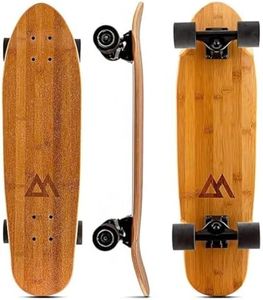
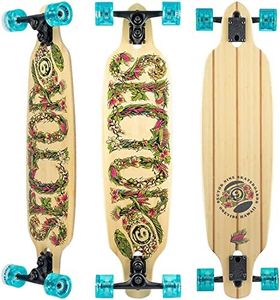
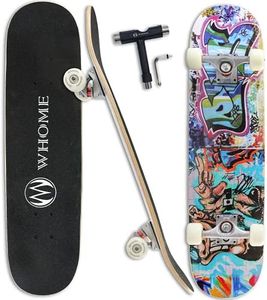

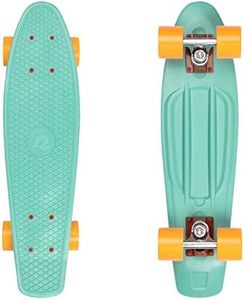



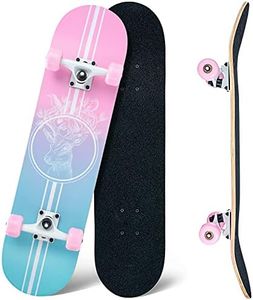
![[CCS] Logo Skateboard Complete Red 7.75"](https://images-proxy.bestreviews.guide/W15e6hpg2iZkttCiZJY0UhscE5M=/0x300/https://m.media-amazon.com/images/I/310SxZqDh9L._AC_CX679_.jpg)



